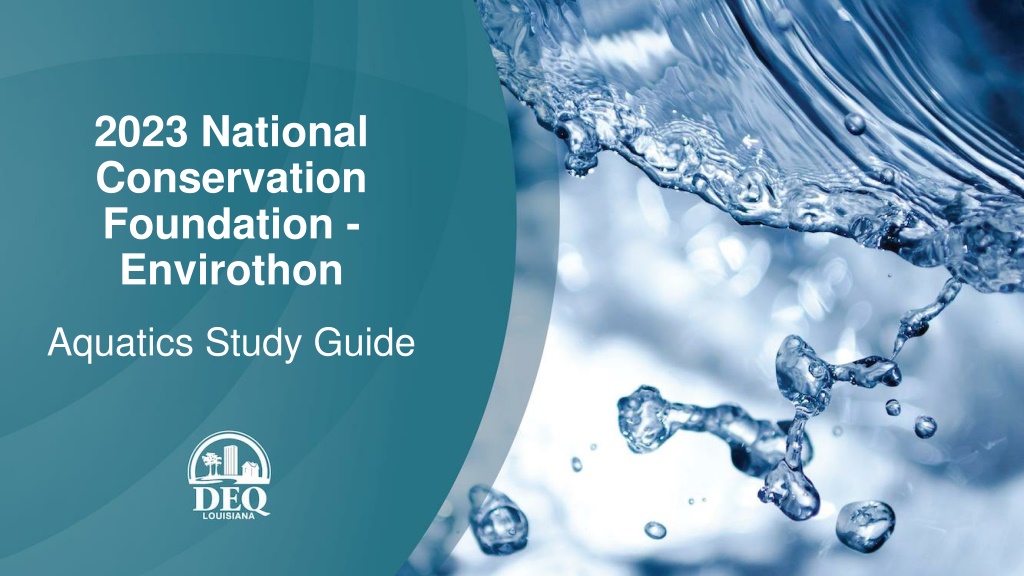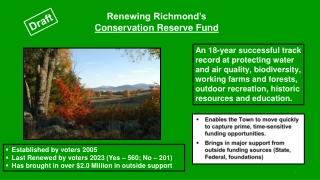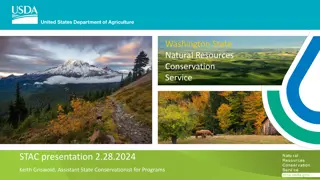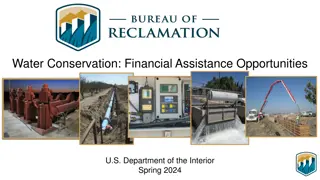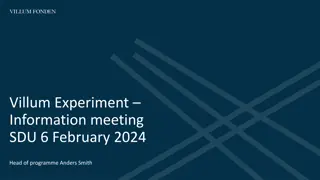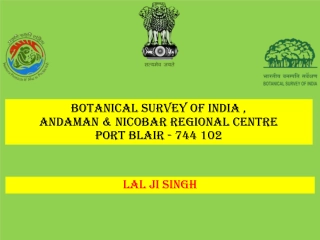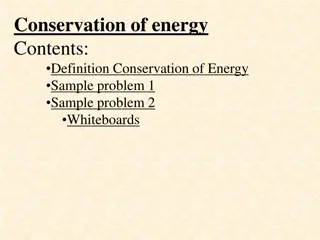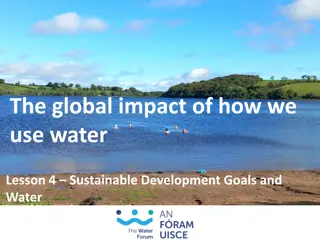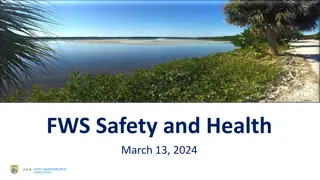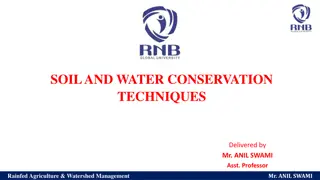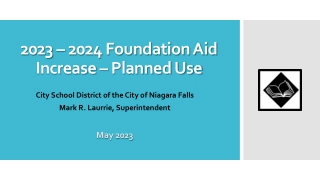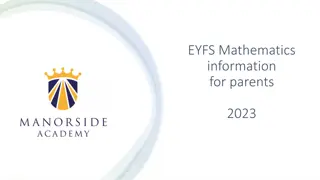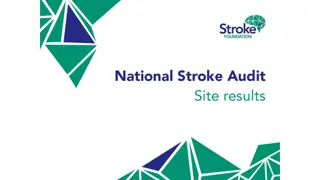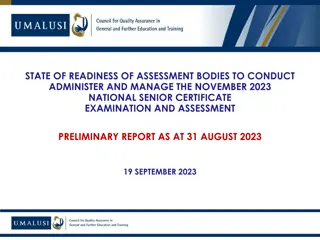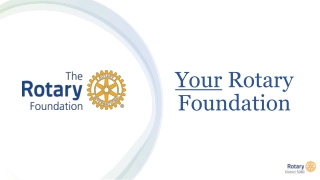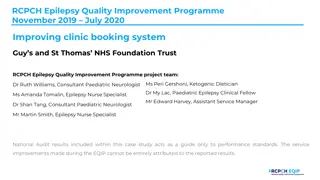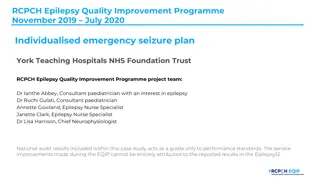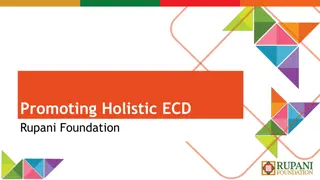2023 National Conservation Foundation - Envirothon
Explore the intricate dynamics of aquatic ecosystems and wetlands conservation through this comprehensive study guide. Discover the importance of watersheds, the hydrologic cycle, aquatic food webs, energy flow at trophic levels, and common macroinvertebrates in Louisiana. Learn about different wetland types like freshwater, brackish, and saline wetlands, along with forested wetlands, marsh wetlands, and vernal pools. Dive deep into the fascinating world of aquatic biodiversity and conservation efforts.
Download Presentation
Please find below an Image/Link to download the presentation.
The content on the website is provided AS IS for your information and personal use only. It may not be sold, licensed, or shared on other websites without obtaining consent from the author. Download presentation by click this link. If you encounter any issues during the download, it is possible that the publisher has removed the file from their server.
Presentation Transcript
2023 National Conservation Foundation - Envirothon Aquatics Study Guide
1. The Hydrologic Cycle http://www.jcscience.ie/es-5.html
Watersheds A watershed or catchment area is the area of land in which all water flows to the same point. A watershed can be as small as the area around your neighborhood that flows into a single stream Or as large as the Mississippi River watershed, which comprises about 40% of the lower 48 states of the United States. It covers parts of 32 states and two Canadian provinces.
17. Watersheds and catchment areas https://www.erosionpollution.com/watershed-protection.html
14. Aquatic food web https://www.biologyonline.com/dictionary/biotic-factor
15. Energy and Trophic Levels https://texasaquaticscience.org/habitats-aquatic-science-texas/
52. Common macroinvertebrates of Louisiana https://www.inaturalist.org/photos/4192 Stonefly larva (Order Plecoptera) https://www.inaturalist.org/observations/72101327 Caddisfly larva (Order Trichoptera) https://www.inaturalist.org/observations/11277225 Predaceous diving beetle larva Beetle larva (Order Coleoptera) https://www.inaturalist.org/observations/85213645 Dragonfly larva dragonflies and damselflies (Order Odonata) https://www.deq.louisiana.gov/assets/docs/Envirothon/Aquaticmacroinvertebratedocuments.pdf
Wetland Types Freshwater no saltwater; < 2 ppt salinity Brackish intermediate salt content; between 3 and 15 ppt Saline higher salt content; > 16 ppt Forested Wetlands have trees like cypress, tupelo, buttonbush and willow Marsh Wetlands have mostly grass like species Vernal Pools small but important form of wetland only holds water for short periods of time many animals like frogs, toads, salamanders, and insects can rapidly locate the pool, breed, hatch, and grow into adults before once again dispersing into the surrounding areas when the pool dries up.
Estuaries, a Special Type of Wetland In between freshwater and saltwater systems is an area known as brackish systems. These are often found in what are known as estuaries or estuarine systems. Estuaries are areas where freshwater from the land mixes with saltwater from the ocean. They create an area with a vast mixture of plants and animals adapted to the gradations from fresh to saline marshes, with different plants and animals occupying different salinity ranges or niches. Salinity in brackish systems ranges from about 2 parts per thousand to about 10 parts per thousand.
5. Brackish water systems or estuaries Illustration by Al Hindrichs
Estuarine Plants Typical freshwater marsh vegetation includes: cattail (Typha angustifolia), bulltongue (Sagittaria spp.), maiden cane (Panicum hemitomon), water hyacinth (Eichhornia crassipes), pickerelweed (Pontederia cordata), alligator weed (Alternanthera philoxeroides), and pennywort (Hydrocotyle spp.). Brackish marshes have: bulltongue (Sagittaria spp.), wild millet (Echinochloa walteri), bullwhip (Scirpus californicus), sawgrass (Cladium jamaicense), wiregrass (Spartina patens), three-cornered grass (Scirpus olneyi), and widgeongrass (Ruppia maritima). At the upper end of an estuaries salinity gradient, salt or saline marshes have: oystergrass (Spartina alterniflora), glasswort (Salicomia spp.), black rush (Juncus roemerianus), saltwort (Batis maritima), black mangrove (Avicennia germinans), and saltgrass (Distichlis spicata).
10. Aquifers http://coastgis.marsci.uga.edu/summit/k12-groundwater.htm
Potable (drinkable) Water in the World About 71 % of the earth s surface is covered with water. There is an estimated 332 million cubic miles of water on earth. But of that huge amount, some 97% is unfit to drink because it is too salty. This salty water can be desalinated, but the process is expensive and only currently used in extremely arid (and wealthy) regions of the world. Of this remaining water, about 80% is frozen at the poles and not readily available for consumption. Out of the remaining portion, about 99.5% is too far underground to be of use, is trapped in soil, or is too polluted to be drinkable. Another way to look at it is that only 0.003% of all the water in the world is potable (drinkable) water.
Dissolved Oxygen Factors affecting the level of DO in water: DO in good water quality water bodies is generally between 3 and 12 parts per million Many things can affect DO concentrations: Temperature (warmer water contains less oxygen) Velocity (rapidly flowing water absorbs more oxygen) Turbulence (higher turbulence = higher oxygen content) Plants in the water (photosynthesis releases oxygen) Decaying materials in the water (decomposition of dead algae, leaf matter, and wastes uses up oxygen) Shading of a stream (affects temperature and photosynthesis, thus oxygen level) Depth (deeper water = lower oxygen content)
Fecal Coliform Bacteria The second most significant form of water pollution in Louisiana is sewage. Can cause dissolved oxygen problems Sewage can cause health problems for humans swimming in the water. Sewage frequently contains high levels of what are known as fecal coliforms. Fecal coliform are naturally found in the intestines of warm blooded animals, where they contribute to the digestion of food. Found in animal intestines they naturally end up in the waste product of those animals. Not normally harmful by themselves but the presence of fecal coliforms may indicate the possible presence of harmful bacteria, viruses, and parasites that may be coming along for the ride.
Nutrients: Nitrogen The sources of nitrogen in water include the air, sewage, animal wastes, artificial fertilizers, and plant and animal matter. The concentration of inorganic nitrogen in relatively unpolluted streams in Louisiana ranges from 0.03 to 0.18 parts per million, and in polluted streams it can be as high as 0.50 parts per million. Louisiana has not yet established numerical water quality standards for nutrients.
Metals Metals are natural elements of the earth, but they also enter surface waters from anthropogenic (human-caused) activities In elevated concentrations, these metals can be harmful to fish and other aquatic organisms Commonly measured metals include: Arsenic Cadmium Copper Lead Mercury Nickel Zinc
44. Point Source vs. Non-point Source Pollution https://pubs.usgs.gov/circ/circ1225/html/sources.html
LDEQ Water Quality Discharge Permits Point source discharges are releases of wastewater from an identified location. Wastewater may originate from large industrial or petrochemical facilities. It may also be discharged from large municipal sewage treatment plants or small neighborhood or business wastewater facilities. In each case the discharger must have a permit from the LDEQ to ensure that the discharge will not harm or impair the water quality of the water body receiving the discharge. Permitting regulations and implementation plans establish procedures to effectively incorporate the water quality standards into wastewater discharge permits.
24. Cyanobacteria and harmful algal blooms https://www.deq.louisiana.gov/page/harmful-algal-blooms-habs https://www.epa.gov/cyanohabs/learn-about-cyanobacteria-and-cyanotoxins
Ocean Acidification Burning of fossil fuels releases carbon dioxide, CO2 CO2 is absorbed into the oceans CO2 in seawater produces bicarbonate (HCO3-) and carbonate (CO32-)which makes the ocean more acidic Since the industrial revolution, the ocean s pH has dropped from 8.21 to 8.10, which is equivalent to ten times greater acidity. Acid wears on and weakens calcium structures like the shells of crustaceans, including commercially harvested crabs, and makes it harder for them to thrive.
47. Ocean Acidification https://www.climate.gov/news-features/understanding-climate/climate-change-atmospheric-carbon-dioxide
56. Equipment: Electronic & Water Sampling Devices YSI electronic water meter Van Dorn horizontal water grab sample bottle Hydrolab electronic water meter Kemmerer water grab sample bottle https://www.hydrolab.com/ https://www.ysi.com/ https://envcoglobal.com/catalog/water/limnology/water-quality-sampling/water-sampling-bottle/surface-water-sampling/kemmerer http://envcoglobal.com/catalog/term/water/limnology/water-quality-sampling/water-sampling-bottle/surface-water-sampling/van
56. Equipment: Sediment Sampling Devices Ekman bottom grab samplers Van Veen bottom grab sampler Ponar bottom grab sampler http://envcoglobal.com/catalog/water/sediments-and-sludge-samplers/bottom-grabs/ekman-bottom-grabs https://www.pine-environmental.com/products/ponar_grab_sampler https://www.generaloceanics.com/sampler-grab-van-veen-small-602-021.html
56. Equipment: Flow meters Wading rod flow meter https://www.phametechnology.com/wp-content/uploads/2014/12/Current-Meter-1.jpg https://www.fondriest.com/usgs-top-setting-wading-rods.htm http://www.geoscientific.com/flowcurrent/AA_Current_Meter.html http://envcoglobal.com/catalog/water/liquid-flow/current-meters-and-discharge-monitoring/river-gauging-equipment/hydro
